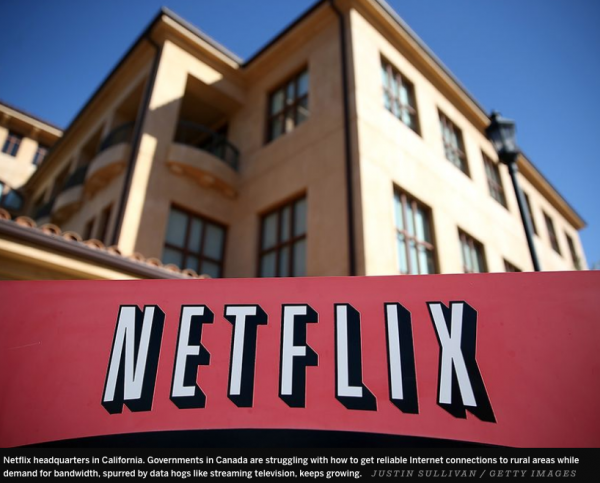
Ontario’s Rural Broadband Challenge
Ontario’s rural broadband challenge is highlighted in this article by Dave Reevely, originally published in the Ottawa Citizen.
Running subsidized Internet lines to rural Ontario has an important thing in common with the provincial government’s plan to pay for new natural-gas pipes to the same places: There’s private money to be made.
We can’t build the economy of the future on dial-up Internet, the Liberals believe. And they’re on the hunt for infrastructure projects to spend their $160-billion construction fund on that will bring in private partners because there’s a revenue stream for them to profit from at the end. Internet service is perfect.
The Ontario government announced its $100-million gas-pipes project earlier this week. Its broadband-Internet project is ongoing, with money dribbling out a million here and a million there over years. In both cases, the government essentially pays for most or all of the setup costs and then the owner makes money delivering methane or bits. Having sparse customers pay for both capital and operating costs through their fees wouldn’t make financial sense.
Not that there isn’t a real challenge here. Of course, if you live someplace where providing high-speed Internet service doesn’t make financial sense, arguably you should put up with it or move. But that way lies deeper decline for rural Ontario, and governments won’t just shrug that off.
Infrastructure Minister Bob Chiarelli tells a story about being in a meeting with a bunch of municipal leaders, talking about what they needed and wanted from the provincial government. Somebody raised the idea of streaming all Ontario Municipal Board hearings on the Internet, a gesture toward public accountability for the tribunal that can overturn decisions by elected city and town councils.
Chiarelli was sitting next to the mayor of Brock Township, he says, who elbowed Chiarelli in the ribs. “That doesn’t do anything for us,” he said. “We don’t have broadband. We can’t stream anything.”
Brock Township is in Durham, closer to Toronto than Barrie is. A couple of weeks ago the provincial and federal governments promised a couple of million dollars to help with broadband access in King Township just north of Vaughan, which you could see from the top of the CN Tower.
In Ottawa, Manotick has Internet service comparable to anything you could get downtown. Smaller villages have slower but still pretty robust service. Farther afield, you can’t count on it.
“We have people in some parts of Ottawa who are on dial-up,” says Coun. Scott Moffatt, who represents Rideau-Goulbourn and chairs council’s rural-affairs committee. Microwave and satellite Internet connections are available but they’re often expensive and less reliable and come with data caps.
Moffatt lives in North Gower, with mid-range broadband.
“We looked at houses and there was one my wife liked and I had to say, ‘You know, we can’t get high-speed here. With all the kids, that’s going to be a problem’,” Moffatt says.
At a conference of the Rural Ontario Municipalities Association in Toronto this week, the association’s chairman Ron Holman — he’s the mayor of Rideau Lakes — pointed out the economic opportunities good Internet access brings.
“I recently learned that the founder of WordPress, which powers about a quarter of the world’s websites, runs his billion-dollar company with no head office,” Holman said in a keynote speech. “They have 400 employees across the globe and none of them have to be tied to big cities to work. … For rural communities, expanding broadband infrastructure is critical.”
The federal government is putting $500 million into the effort nationwide. The Canadian Radio-television and Telecommunications Commission says every Canadian should have access to Internet speeds of at least 50 megabits (about six megabytes) per second, as a basic service, which is 10 times faster than the federal government’s target used to be.
That’s because there’s high-speed and then there’s high-speed. It’s one thing to host an online booking service for your tourism business. Having the bandwidth it takes for a graphic designer or video editor to set up shop and shuttle files back and forth to clients, or a tech whiz to work remotely for the company that runs WordPress, is something else. Now Internet providers have to contend with Netflix and similar streaming-TV services, which have customers chewing up all the bandwidth they can get.
It’s an endless chase. That’s where the danger is: Unlike water or gas or electricity, there’s no real prospect of reducing demand by getting people to conserve their data use. How this ends with rural communities able to support their own growing bandwidth demand isn’t obvious.
But for now, there’s money to be spent, work to be done, economies to be supported, votes to be gained. So on we go.
For more on rural broadband, visit our rural Technology page.
